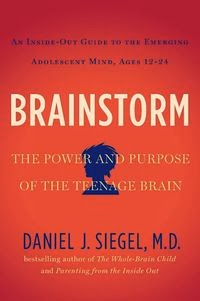"Brainstorm," by Daniel J. Siegel

In family home evening, we discussed ideas for optimal brain health and emotional well-being based on Daniel J. Siegel's book Brainstorm , which Grandpa recommended. Much as our bodies benefit from a balanced diet, our brains benefit from a variety of activities. I offer these tips like a smorgasbord of ideas you can choose from for a well-balanced brain diet. :) 1. "Time-in" means reflection on our feelings. Writing in a journal can help us SIFT (senses, images, feelings, and thoughts). This reflective process releases the enzyme telomerase, which repairs our chromosomes and keeps our bodies healthy (282-84). 2. "Sleep time" involves 8 1/2 to 9 1/4 hours for teens. This activity helps fight off disease, process insulin better and maintain good metabolism, handle stress and emotions better, and connect better in relationships. Without good sleep, memory is impaired, and we feel frustrated and irritated (284-85). 3. "Focus time" means sett...